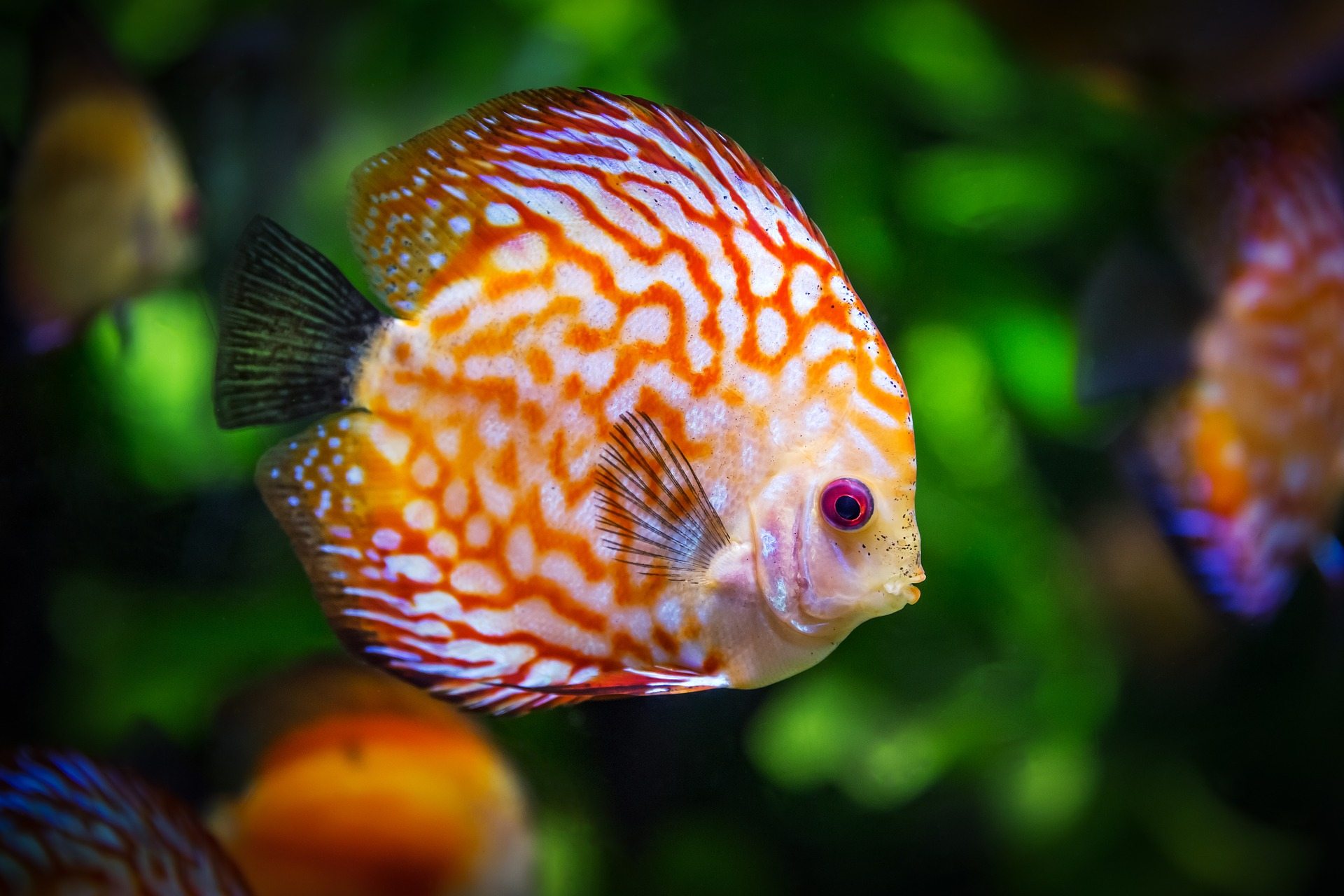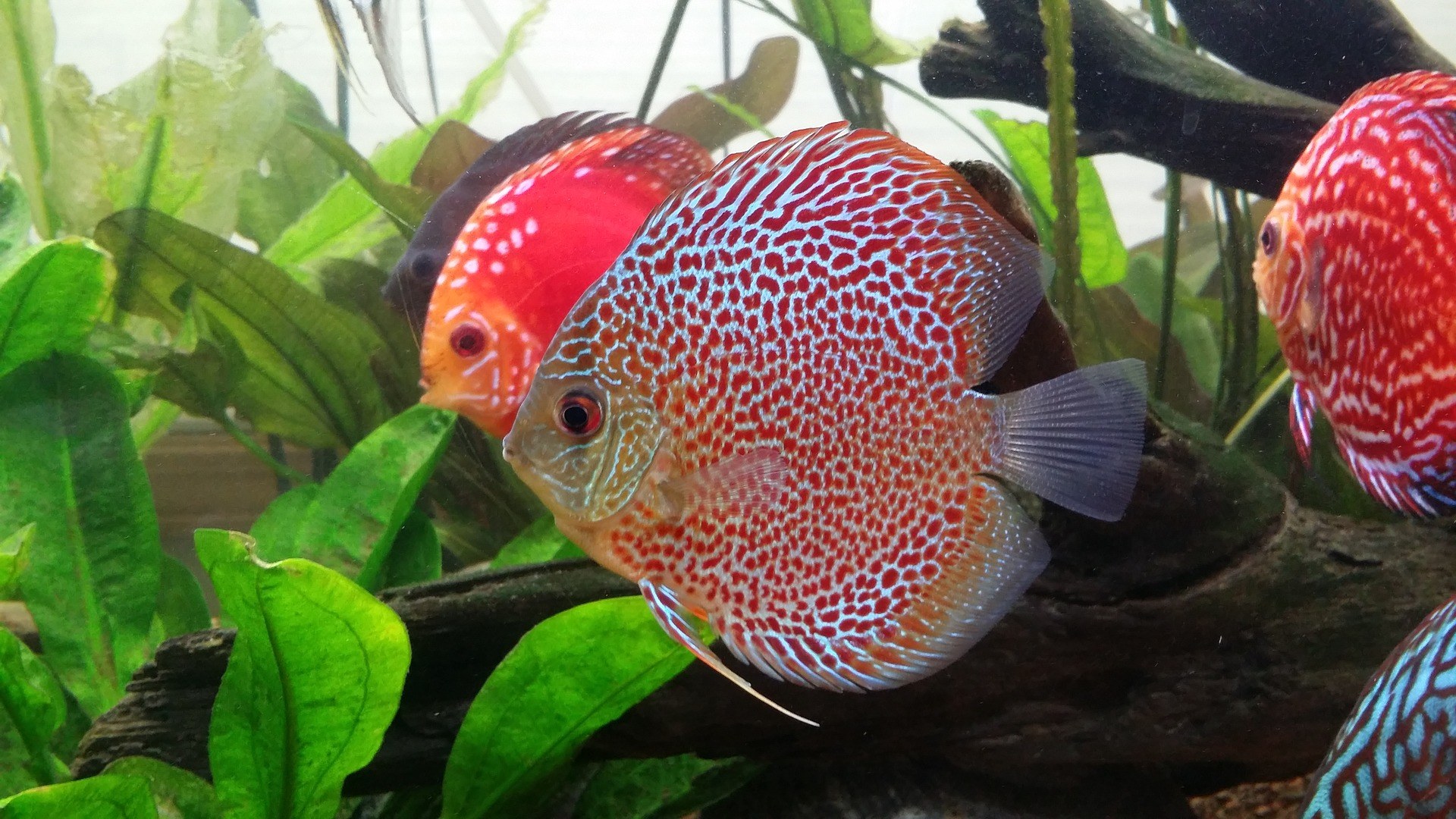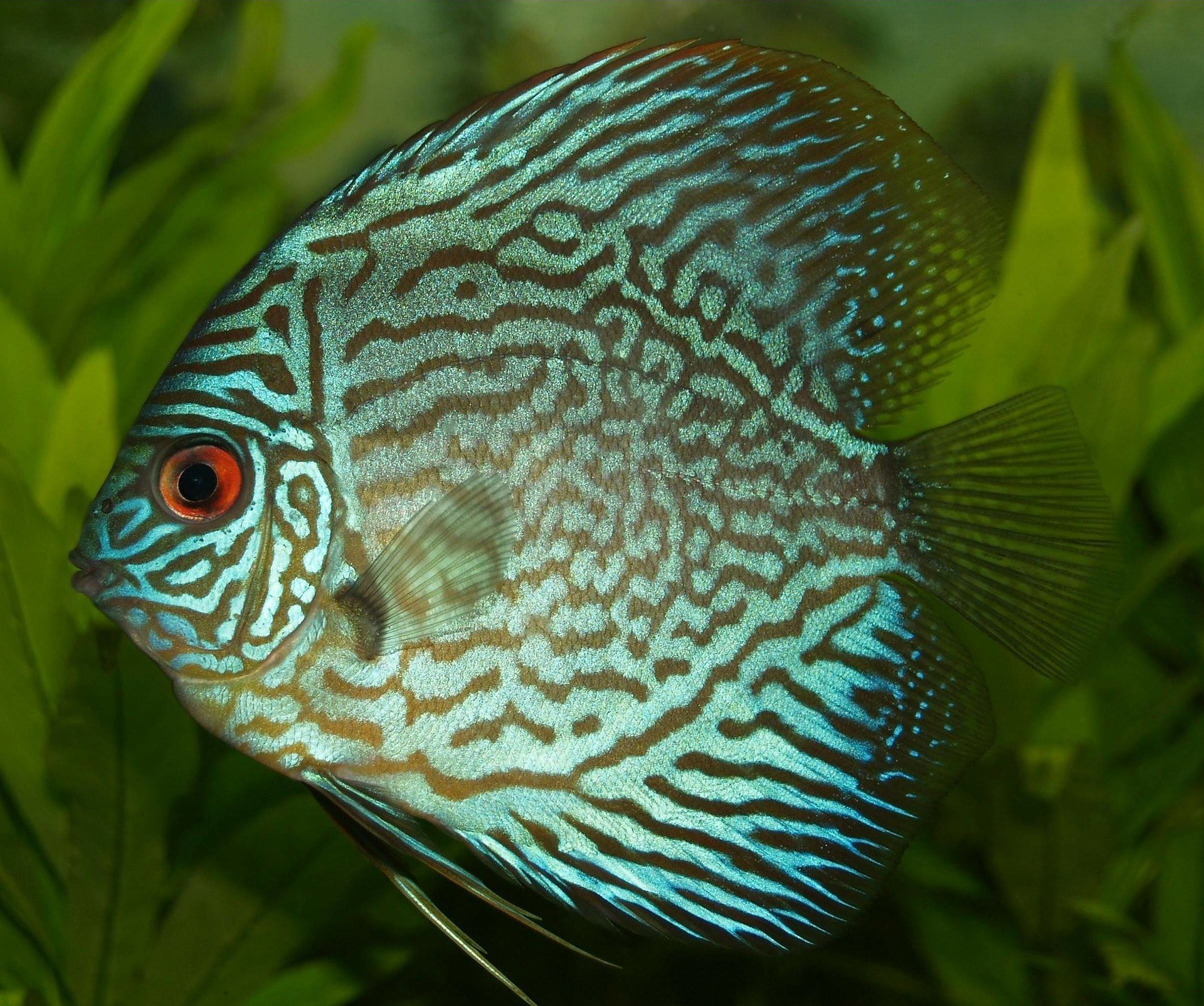If you’re a long-time aquarium owner, then you may be considering the Discus as a species perfect for your collection.
Though it’s not an easy breed to care for, it can be a very rewarding one!
But what special needs should you look out for? What are some advantages they offer over other fish?
Here we break down all you need to know before buying a Discus of your own.
Contents
Discus Fish Appearance
Discus are medium-sized fish. When fully grown, they will usually be around five to six inches, but can definitely get bigger than that – with reports of Discus growing up to nine inches long.
Discus Fish Personality
When it comes to caring for them, on a difficulty chart, Discus are medium to high. With the right care and environment, Discus can live for a long time, sometimes longer than ten years.
In general, Discus are very social creatures; they get bored and upset when alone, so it’s important to have at least five of them at a time to sustain their happiness.
If Discus fish breed, they will become incredibly territorial and sometimes aggressive.
In this case, they may be a threat to your other fish, so it is wise to relocate them when ‘territorial’ crosses over into ‘dangerous.’
They’ll snap out of it after a few days, at which point you’re welcome to return the others.
Personality
Though they’re relatively peaceful, and aren’t aggressive except for territorial behaviour while breeding, most people suggest keeping them in their own tank because of the very specific and clean environment they need.
If you do want tank mates for them, consider Corydoras catfish or Cardinal tetras, as their environment needs are similar to the Discus’.
Price
The cost of purchasing a Discus really depends on the size and type. Smaller Prices can range from $30 for a small fish to over $100 for a large fish.
If you have your eyes on a rare or exotic Discus, expect to pay up to around $400.
Sickness
Discus are not more likely to get sick than other fish species, but it’s important to look out for illness anyway.
After all the effort you put into transferring them, it’d be a bummer to watch them leave for the big aquarium in the sky over a common fish-cold (metaphorically speaking)!
Cloudy eye is a relatively common issue for Discus, which will manifest in a white, mostly-transparent film layered over one or both eyes. The main cause for this is poor water conditions, but it can happen because of bacterial infections or parasites.
Change the water more frequently for a few weeks and pay close attention to your fish; if it doesn’t go away, you may need to use an antibiotic.
Fin or tail rot is also an occasional issue; the fins or tail will look shredded or disintegrated, oftentimes with discolouration around the holes. This can be caused by poor-quality water, but bacterial infections are always a potential issue.
As soon as you notice these symptoms, treat it with antibiotics and change the water more frequently for at least a week.
There are other potential illnesses, but these are the most common. Be sure to observe your Discus frequently, and research differences as soon as they come up! It’s better to be safe than sorry.
Discus Babies
Discus are not easy breeders. For the most part, they don’t breed on their own, as they need incredibly specific water and tank conditions to feel ‘in the mood.’
Even people who are experts in breeding Discus tend to have issues in this regard.
In order to lay eggs, there must be a spawning medium – usually a cone where the female can place the eggs.
If you have a breeding pair and place a spawning medium in their aquarium, you will then be able to make the decision whether to keep and raise the baby Discus or discard them.
Raising Discus can be a difficult process, so be sure to do your research before deciding!
Discus Fish Care
Once you’re finally able to put your Discus in the aquarium, you need to make sure they stay safe! Here are some tips to ensure they stay happy and healthy while living with you.
Tank Requirements
Once you have an appropriately sized aquarium (or larger if you want to be safe), it’s time to make it picture-perfect for your Discus.
Begin by installing a strong filtration system that your fish can adapt to quickly, and then start a bacteria cycle. The easiest way to jump-start this cycle is to take a used filter pad from someone who already has an aquarium and run it through your filter for several hours.
Of course, Discus also need decorations! While other fish species prefer gravel at the bottom of their tank, the way Discus eat (and the necessity of cleanliness) means that substrate at the bottom of the tank is generally a bad idea, and we don’t recommend adding it.
Plants and other decorations, however, are excellent in providing your Discus with areas to hide and play.
In addition, Discus need a great deal of space, and the ‘one-inch to one-gallon’ rule doesn’t apply here.
Generally, five to seven Discus should be kept in a 55-gallon tank – one at least three feet long – so the Discus have enough space to relax.
Water requirements
Discus are one of the most finicky fish with regards to their habitat. Your water should stay between 84 and 87 degrees Fahrenheit (28-30 degrees Celsius), so be sure to invest in both heaters and a high quality thermometer during the initial adjustment period.
Changing the water frequently is also very important. At the very least, you should be changing 50% of your water every week.
Some owners do twice-weekly 40% water changes, and some do 25% changes every other day.
As long as you change your water consistently, your Discus has a much lower chance of becoming sick.
Discus Tank Setup
It’s vital to introduce your Discus as carefully as possible to their new living space, because Discus can experience serious issues with stress during the transfer process.
In order to accomplish this, you’ll need a more advanced technique than you’re used to (the classic ‘slowly add water from the aquarium into the plastic bag your fish was bought in, then release the fish into the aquarium’).
You’ll need a clean 3-5 gallon bucket and airline tubing, first of all, and your aquarium will need to be fully set up.
Take the bag your Discus came in and float it gently in the aquarium, leaving it for about 15 minutes to ensure the water is the same temperature.
Empty the bags, including the Discus, into your bucket, then take the airline tubing and run a siphon drip from the main aquarium to the bucket.
To run a siphon drip, tie several loose knots in the tubing, then place one of its ends in the aquarium. Suck on the other end of the tubing until the water is running through the tube, then place it above the bucket; it will drip into your bucket slowly.
You may need to tighten the knots to make sure it’s dripping at a rate of 2-4 drips per second.
Once the water in the bucket is about double the starting amount, take out half the water and throw it out, then let it continue to drip until it’s doubled again.
This will take about an hour. Once the water has been thoroughly combined, take a fish net and move the Discus from the bucket to your aquarium, then throw out the bucket water.
Make sure you’re paying close attention to the Discus for the first weeks! If there are going to be any issues from the transfer, they’ll likely happen in this time frame.
Here’s a video of a Discus fish tank set up.
Tank Maintenance
It’s not very important to pay special attention to the pH level, as long as it doesn’t fluctuate, but the ideal for Discus is between 5 and 7.
Your nitrate, nitrite, and ammonia have to be monitored very carefully, as Discus are very sensitive, requiring the levels of both to be kept at 0ppm. Anything over 20ppm of nitrate will harm your Discus.
If trouble comes knocking with an imbalance to these levels, it’s important to make changes pronto.
Discus Fish Food
Feeding, of course, is very important. With Discus, the main issue tends to be overfeeding, which will easily lead to food polluting the tank.
This is especially harmful for Discus, as they need very clean water. The best thing to do is to feed them a very small amount of food more frequently, usually 3-4 times a day.
Feed your fish slowly, and pay attention to any food they don’t eat; this will fall to the bottom of the tank and you’ll need to clean it later.
When feeding Discus, you should vary their diet, leaning more toward live foods. They are carnivorous fish, so they do best on a diet of blood worms and occasional beef heart, supplemented with fish food to deliver vitamins.
When you do feed your Discus fish food, make sure to get the high-quality stuff! Low-quality fish food is often stuffed with fillers and will not give Discus the nutrients they need to survive.
Keeping Discus Fish
Discus are a difficult species to care for.
Beginners may not be able to raise Discus effectively, but anyone who decides to take it on will find themselves with a fun group of fish that will provide lots of entertainment.
Do you own any Discus fish?






